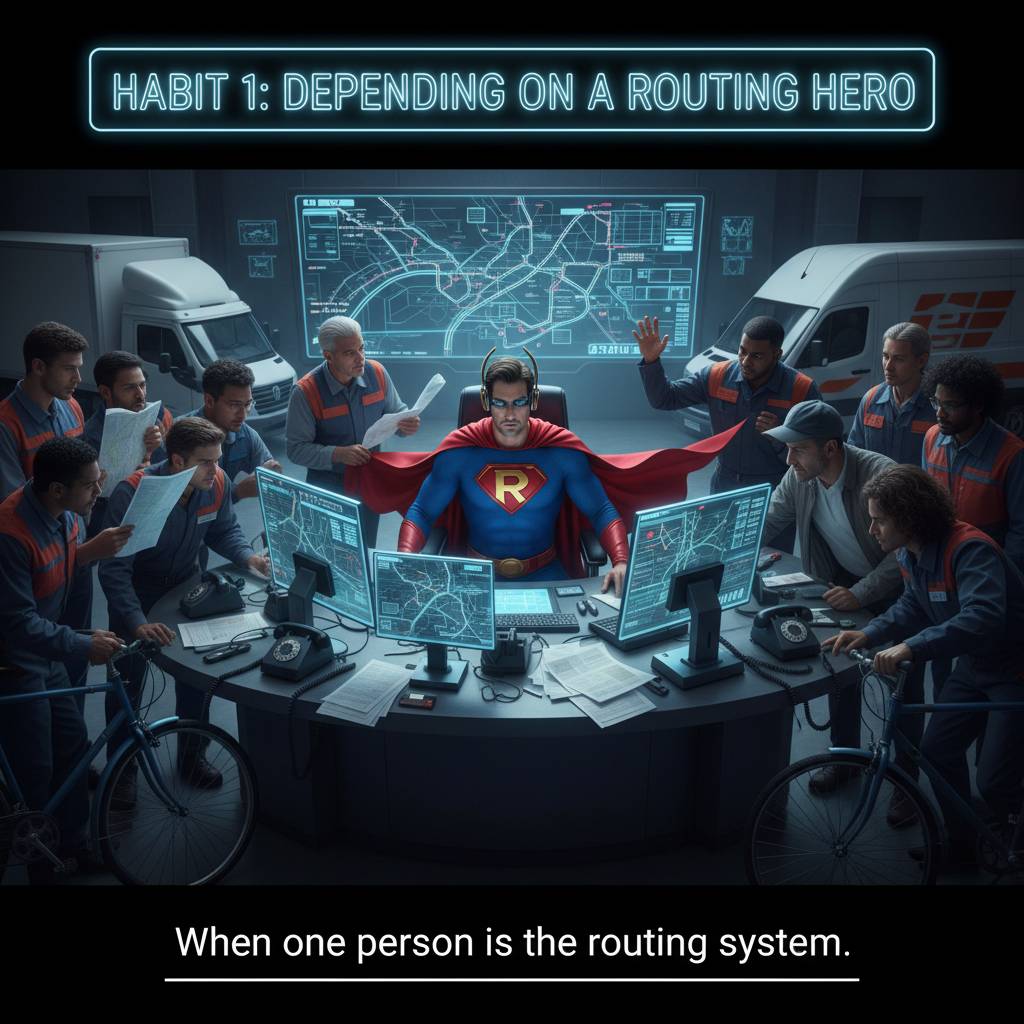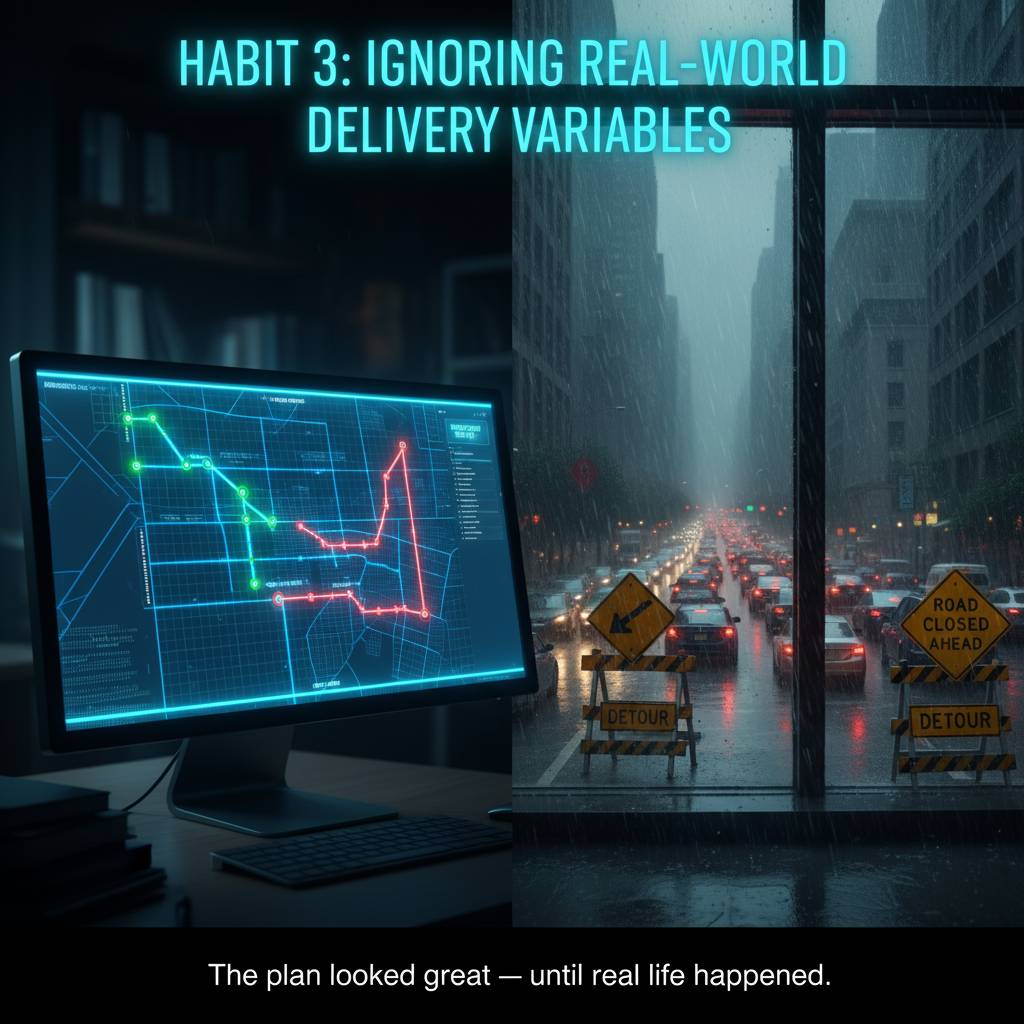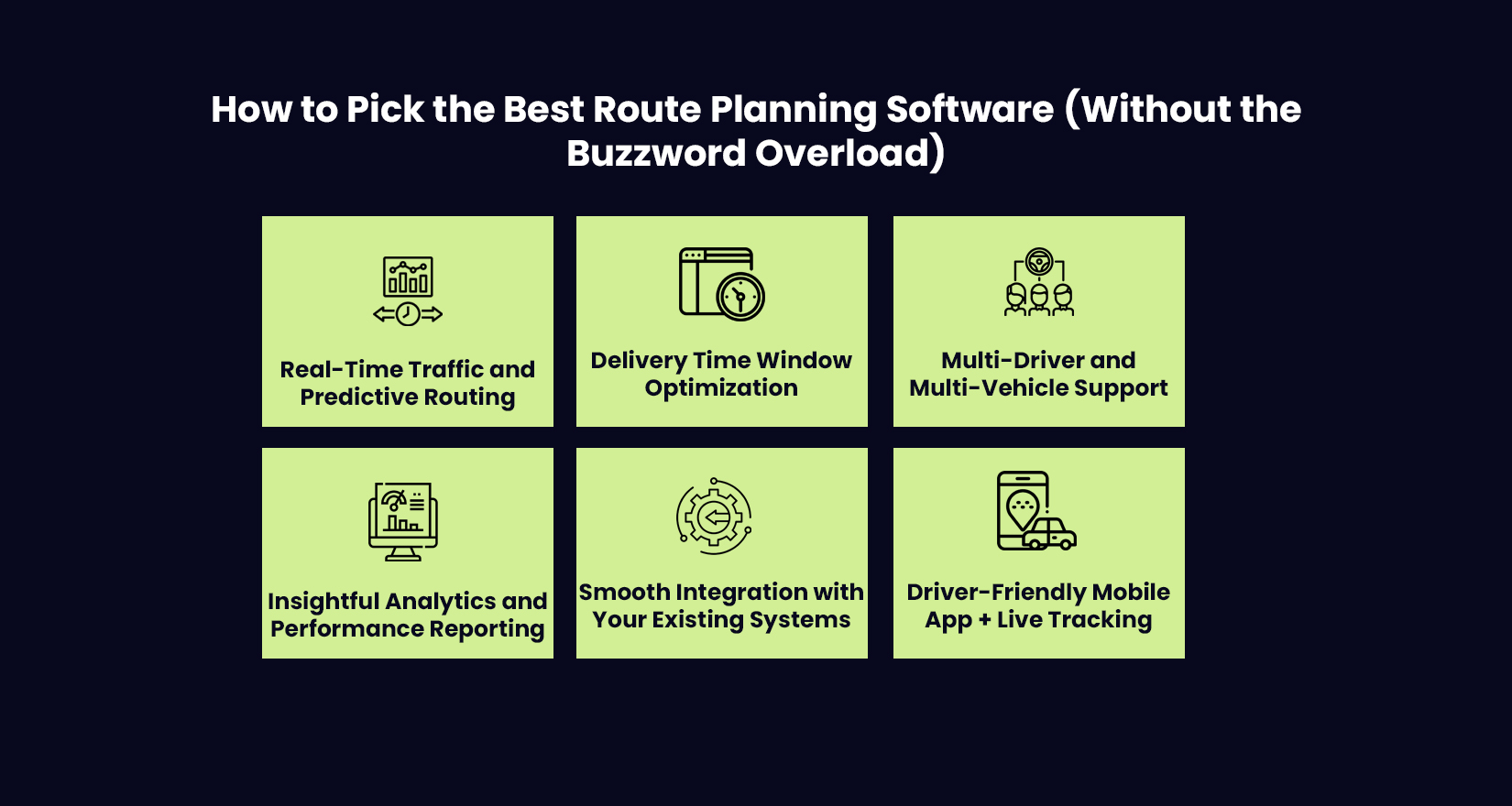
Breaking Bad… Routing Habits: How Route Planning Software Helps You Go From Chaos to Kingpin Precision
If your writing meetings seem like an improv show each morning, that truly is your key. You know your delivery operations are still driven by habits, gut-feeling and the ever-famous “We trust Bob because he knows all the routes and is our driver.” That used to work. But the moment the order volume rises, the driver changes, fuel prices fluctuate and every customer looks for accurate ETAs, you created a routing model that traverses between carefully thought out planning and duct tape. This is where route planning software comes into play.
Breaking poor routing habits have nothing to do with blaming your journey here. It’s about realizing the inadequacies of manual planning. To more easily scale, you need a routing model that is consistent, data-driven and can adapt. Route planning software does not just automate routes. It is the operational backbone, keeping everything in alignment and your operations rolling.
Before we get into how to fix things, let’s understand the habits that keep logistics teams stuck in reactive mode.
Habit 1: Relying on One Routing Hero

Every logistics team has That One Person. The veteran who “just knows every shortcut.” The person others avoid disturbing during lunch because they are busy making route maps in their head.
This hero is valuable, of course.
– But not scalable.
– Not replaceable.
– Not sustainable.
According to a report from McKinsey, 70% of logistics inefficiencies come from knowledge bottlenecks and manual decision-making. If routing depends on someone’s memory, then the whole operation is one sick day away from chaos.
A route planning system removes the dependency. It records, optimizes, and standardizes routing logic, with decisions thus living in your workflows, not in any one brain.
Habit 2: Planning Routes with Spreadsheets

Spreadsheets are great. To balance budgets. Record attendance. To keep weekend grocery lists. But planning dynamic routes with traffic variations, capacity constraints, vehicle types, fuel efficiency, customer priorities, and time windows?
No spreadsheet was born for that level of pain.
Yet, many teams do it anyway, creating monster sheets with 40+ columns of data. Worst part: by the time the routes are calculated, the real-world conditions have already changed.
A route planning solution processes real-time data, recalculates movements, and updates ETAs instantly. No more manual editing, No more “let me just insert one more row”, and no more confusion.
Habit 3: Ignoring Traffic, Weather, and On-Ground Realities

This is where operations get expensive.
– Traffic delays can cost delivery fleets up to an additional 30% in fuel consumption.
– Missed delivery windows can reduce customer satisfaction scores by up to 18%.
– Last-mile execution contributes to 53% of the total cost of logistics.
If routes don’t adapt, your operations bleed money with surprising speed.
Route planning software integrates real-time traffic, geofencing conditions, seasonal behavior, and vehicle health data: the route is real, not wishful. It doesn’t just “find the shortest distance.” It finds the best practical route for that specific day, hour, and vehicle.
That is the difference between smooth deliveries and those that spiral into hot mess territory.
Habit 4: Treating Every Delivery Like It Has the Same Priority

Not all deliveries are created equal.
That customer who ordered groceries for the evening party? Yes, they care much more than he who ordered extra batteries “for later.” And yet, many routing operations treat all deliveries the same… because it’s easier to plan routes in bulk.
The best route planning software uses priority-based routing:
– High-value orders receive faster lanes.
– Perishables get temperature-controlled routes.
– VIP customers receive tighter ETAs.
Business-critical deliveries get proactive alerts.
– Prioritization = retention.
– Retention = revenue.
– Pretending all deliveries are the same = churn.
Habit 5: Thinking Optimization Is a One-Time Setup

Some believe routing is:
Plan once → Run forever → Done.
Reality: routing is living, breathing, and constantly changing.
New neighborhoods crop up. Fuel prices fluctuate on a weekly basis. The drivers arrive, leave, and shift. Road regulations are changed overnight. Seasonal demand spikes bring about utter chaos.
A route planning system doesn’t “set and forget.” It continually learns:
– Which driver performs best on which routes.
– What lane has continuously caused congestion.
– Which delivery windows customers actually prefer.
– Where delays repeat, and why.
This is how the routing engine grows smarter, not older.
So, What Happens When You Break These Habits?
1. Reduce Fuel and Route Costs:
Advanced route planning software optimizes delivery paths in view of distance, traffic, and load capacity. This leads to 20–40% lower fuel spend with reduced unnecessary kilometers on the road.
2. Boost Fleet Productivity:
Smarter routing ensures that drivers complete more stops in less time, meaning that fleet output could be as much as 35% higher without adding more vehicles.
3. Improve Delivery Reliability:
Automation in planning reduces errors and delays, resulting in fewer SLA violations by 15–25% and a more consistent on-time delivery.
4. Lower Operational Stress:
Dispatchers are no longer scrambling to fix routing problems by hand. The system manages the complexity, so decisions become much calmer, faster, and more confident.
How to Pick the Best Route Planning Software (Without the Buzzword Overload)

Choosing a routing platform shouldn’t feel like decoding instructions from a tech cult. The right solution is one that solves real operational problems—not one that just throws AI, ML, and “automation” into every sentence. And among the platforms built to actually improve fleet efficiency and delivery performance, LogiNext stands out for doing this consistently at enterprise scale.
Here’s what to look for—and where LogiNext delivers:
1. Real-Time Traffic and Predictive Routing:
Routes must be modified instantly based on blocked traffic, weather, and roads, and not rigidly hold on to yesterday’s plan. LogiNext recalculates ETAs in the moment for drivers and reroutes them for on-time delivery.
2. Delivery Time Window Optimization:
Your clients don’t just want delivery to be fast, they want it to be dependable. LogiNext will optimize the route with time windows, thus providing on-time delivery across high volume operations.
3. Multi-Driver and Multi-Vehicle Support:
Whether you have 10 vehicles or 10,000, your routing will not break when you scale. LogiNext will take the complexity of multi-driver, multi-vehicle and multi-depot with no micromanaging involved.
4. Insightful Analytics and Performance Reporting:
You need analytics that expose bottlenecks, and subsequently improve efficiency day after day. LogiNext gives you heat maps on routes, insights on driver performance and total cost breakdowns, so routing is strategic and not reactive.
5. Smooth Integration with Your Existing Systems:
Your routing tool needs to integrate and not force you to rebuild the tech-stack. LogiNext integrates with TMS, ERP, WMS, OMS, and driver apps to create a seamless execution framework from planning to the doorstep.
6. Driver-Friendly Mobile App + Tracking:
Drivers should see clear routes, tasks, and instructions on steps for proof-of-delivery, among others, and, importantly, live updates without having to call their dispatch every 10 minutes. Meanwhile, managers should be able to track real-time progress-without status updates being chased.
In Closing: You Don’t Have to Be “Perfect” to Improve
Your routes don’t have to be perfect. They just have to be consistently smarter than the day before. You’re not going to throw out everything that’s worked up to now; you’re going to level up from instinct-driven routing to systems that learn, scale, and adapt faster than any manual planning could. The companies moving ahead today are the ones treating routing as strategy, not guesswork.
Logistics isn’t a memory game anymore; it’s a data game. And those who embrace that shift win on cost, customer satisfaction, and operational efficiency. If you’re ready to make that move, book a demo with LogiNext, and see what smarter routing actually looks like in action.
Like







@LogiNext